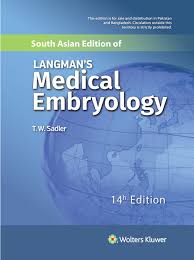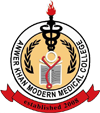Anwer Khan Modern Medical College
Library Management System

| Title: | Langman's medical embryology. |
| Author Name: | T. W. Sadler |
| Author Sur Name: | SADLER T. W. |
| Author information: |
|
| Edition/Published: | 14th ed. _Philadelphia : Wolters Kluwer , 2019 |
| New to this edition: |
|
|
Physical Description: : <p>xxii, 432 pages : illustrations ; 24cm</p>.; |
| Notes | Includes bibliographical references & index. |
| Includes Index: | 411-432 |
| ISBN No's: | 978-93-88313-76-6 , , |
| Bar Code's: | , , |
| Shelf Location's: | , , |
| Classification | |
| Subject: | Embryology |
| Dewey Class No: | 612.64 |
| LC Classification: | QM601.L35 2019 |
| Other's Book Information | |
| Book ID No: | 2305 , 2304 , 2306 |
| Total Books: | 3 |
| Date of collection's: | 26-Dec-2018 , 26-Dec-2018 , 26-Dec-2018 |
| Language: | English |
| Status: | Available |
| Department: | Anatomy |
| Synopsis: |
|
| Review: |
|
| Description: |
|
| Key Features: |
|
| Summary: |
Langman's Medical Embryology, authored by T.W. Sadler, is a well-regarded textbook that provides a comprehensive understanding of human embryology and its clinical implications. The 14th edition of the book, like its previous editions, likely covers essential topics in embryology, including gametogenesis, fertilization, early development, organogenesis, and developmental abnormalities. It is designed to be a valuable resource for medical students, healthcare professionals, and researchers seeking a detailed understanding of human embryology. |
| Abstract: |
Langman's Medical Embryology, 14th Edition provides a comprehensive and up-to-date overview of the development of the human embryo and fetus. The text is written in a clear and concise style, and it is richly illustrated with full-color diagrams, photographs, and clinical images. The book is organized into three parts. The first part covers the general principles of embryology, including fertilization, implantation, and organogenesis. The second part covers the development of specific organ systems, such as the cardiovascular system, the nervous system, and the musculoskeletal system. The third part discusses the clinical aspects of embryology, such as birth defects and prenatal diagnosis. Langman's Medical Embryology is an essential resource for students of medicine, nursing, and other health professions. The text provides a solid foundation in the basic principles of embryology, and it also covers the latest research in the field. The book is well-written, well-illustrated, and clinically relevant, making it an essential resource for anyone who wants to learn about the development of the human embryo. |
| Preface: |
Every student will be affected by a pregnancy, either their mother’s, because what happens in the womb does not necessarily stay in the womb, or by someone else’s. As health care professionals, you will often encounter women of childbearing age who may be pregnant, or you may have children of your own, or maybe it is a friend who is pregnant. In any case, pregnancy and childbirth are relevant to all of us, and unfortunately, these processes often culminate in negative outcomes. For example, 50% of all embryos are spontaneously aborted. Furthermore, prematurity and birth defects are the leading causes of infant mortality and major contributors to disabilities. Fortunately, new strategies can improve pregnancy outcomes, and healthcare professionals have a major role to play in implementing these initiatives. However, a basic knowledge of embryology is essential to the success of these strategies, and with this knowledge, every healthcare professional can play a role in providing healthier babies. To accomplish its goal of providing a basic understanding of embryology and its clinical relevance, Langman’s Medical Embryology retains its unique approach of combining an economy of text with excellent diagrams and clinical images. It stresses the clinical importance of the subject by providing numerous clinical examples that result from abnormal embryological events. The following pedagogic features and updates in the 14th edition help facilitate student learning. Organization of Material: Langman’s Medical Embryology is organized into two parts. The first provides an overview of early development from gametogenesis through the embryonic period. Also included in this section are chapters on placental and fetal development as well as prenatal diagnosis and birth defects. The second part of the text provides a description of the fundamental processes of embryogenesis for each organ system. Clinical Correlates: In addition to describing normal events, each chapter contains clinical correlates that appear in highlighted boxes. This material is designed to demonstrate the clinical relevance of embryology and the importance of understanding key developmental events as a first step to improving birth outcomes and having healthier babies. Clinical pictures and case descriptions are used to provide this information, and this material has been increased and updated in this edition. Genetics: Because of the increasingly important role of genetics and molecular biology in embryology and the study of birth defects, basic genetic and molecular principles are discussed. llqe first chapter provides an introduction to molecular processes, defines terms commonly used in genetics and molecular biology, and describes key pathways used in embryonic development. Then, throughout the text, major signaling pathways and genes that regulate embryological development are identified and discussed. Extensive Art Program: The artwork has always been designed to enhance understanding of the text and includes four-color line drawings, scanning electron micrographs, and clinical pictures. Once again, artwork has been added, especially to Chapter 18, to illustrate new concepts in the development of the central nervous system, diaphragm, ear, and other structures. Summary: At the end of each chapter is a summary that serves as a concise review of the key points described in detail throughout the chapter. Key terms are highlighted and defined in these summaries. Problems to Solve: Problems related to the key elements of each chapter are provided to assist the students in assessing their understanding of the material. Detailed answers are provided in an appendix at the back of the book. Glossary: A glossary of key terms has been expanded and is located at the back of the book. thePoint Web site: This site for students and instructors provides an interactive question bank of USMLE board-type questions. Teaching aids for instructors are also provided in the form of an image bank and a series of lectures on the major topics in embryology presented in PowerPoint with accompanying notes. I hope you find this edition of Langman’s Medical Embryology to be an excellent resource for learning embryology and its clinical significance. Together, the textbook and online site, the Point, are designed to provide a user-friendly and innovative approach to understanding the subject.
T.W. Sadler Sheridan, MT |
| Content: |
Part 1: General Embryology 1: Introduction to Molecular Regulation and Signaling-13 2: Gametogenesis: Conversion of Germ Cells into Male and Female Gametes-14-33 3: First Week of Development: Ovulation to Implantation-34-49 4: Second Week of Development: Bilaminar Germ Disc-50-58 5: Third Week of Development: Trilaminar Germ Disc-59-71 6: Third to Eighth Weeks: The Embryonic Period-72-95 7: The Gut Tube and the Body Cavities-96-105 8: Third Month to Birth: The Fetus and Placenta-106-127 9: Birth Defects and Prenatal Diagnosis-128-144 Part 2: Systems-Based Embryology-145-146 10: The Axial Skeleton-147-159 11: Muscular System-160-166 12: Limbs-167-178 13: Cardiovascular System-179-222 14: Respiratory System-223-229 15: Digestive System-230-255 16: Urogenital System-256-283 17: Head and Neck-284-312 18: Central Nervous System-313-350 19: Ear-351-359 20: Eye-360-369 21: Integumentary System-370-376 Part 3: Appendix-377-378 Expandable section Answers to Problems-379-390 Figure Credits-391-396 Glossary of Key Terms-397-409 |
Related Books
- Langman's medical embryology.
- Atlas of human anatomy
- Atlas of human anatomy
- Clinical anatomy by regions
- Gray's anatomy: the anatomical basis of clinical practice
- Junqueira's basic histology: text and atlas
- Textbook of anatomy upper limb and thorax: vol. 1
- Textbook of anatomy head, neck and brain: vol. 3
- Textbook of human osteology: with atlas of muscle attachments
- Textbook of human osteology: with atlas of muscle attachments
